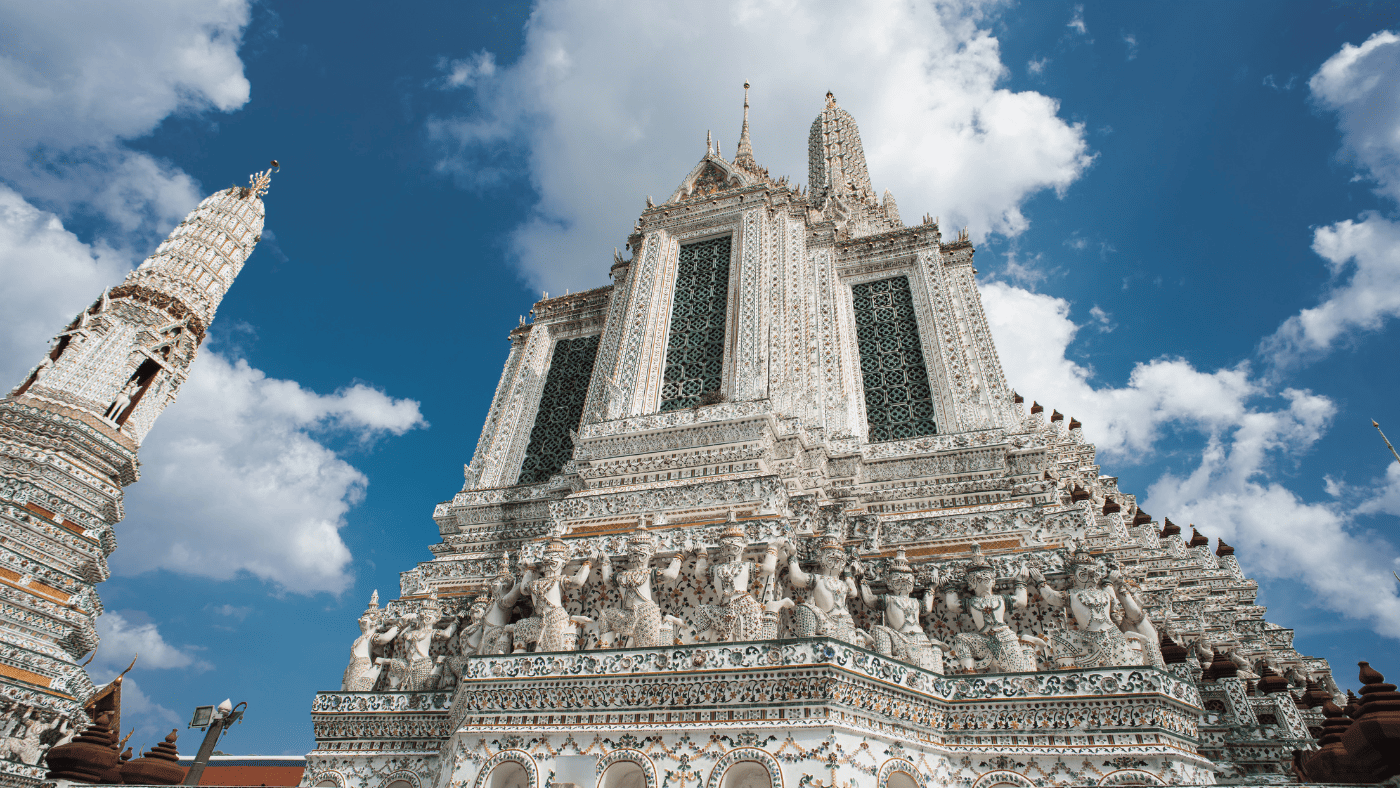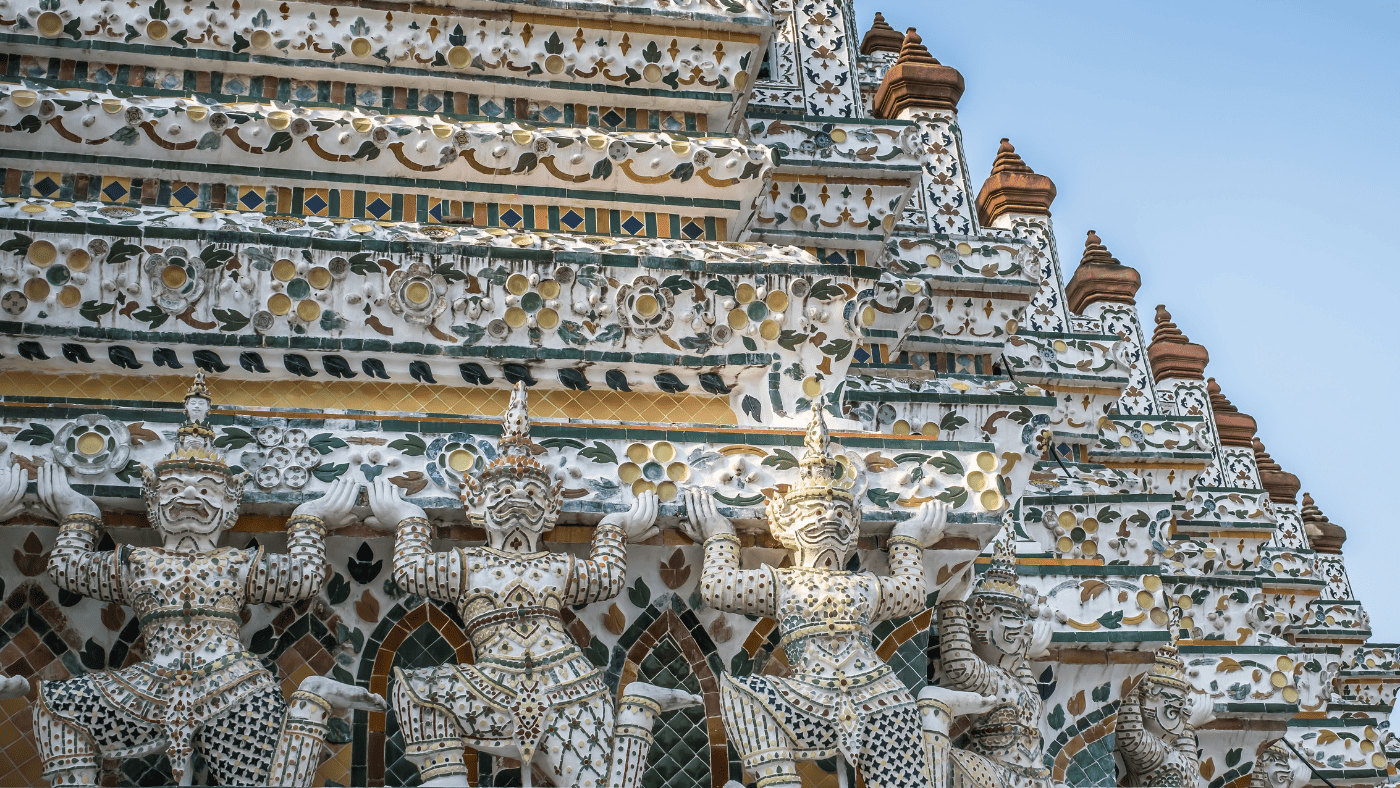Wat Arun, also known as the Temple of Dawn, is a prominent temple located on the west bank of the Chao Phraya River in Bangkok. The stunning temple is famous for its unique architecture, cultural significance, and unparalleled beauty that has made it a prime tourist attraction in Thailand. In this guide, we will take a closer look at Wat Arun, its history, architecture, cultural significance, and how to explore the temple grounds.
A Brief History of Wat Arun

The Origins of the Temple
Wat Arun is believed to have been built during the Ayutthaya period in the 16th century. The temple was originally named Wat Makok after the village where it was located. The temple was built by King Taksin’s army after they sacked Ayutthaya. It is said that King Taksin saw the first light of dawn reflecting off the temple’s spires after he escaped from the Burmese army and decided to name it Wat Chaeng, meaning Temple of the Dawn. Later, after King Taksin conquered the area and established Thonburi as his capital, he renamed the temple Wat Chaeng. The current name, Wat Arun, was given during the reign of King Rama II in the 19th century.
Wat Arun’s Role in Thai History
The temple has played a significant role in Thai history. During the Thonburi period, it was the main temple of King Taksin’s reign, and many important ceremonies were conducted there. It was also used as a royal temple by King Rama II, who ordered the construction of the temple’s famous prang or tower. The prang was built in Khmer style and was decorated with Chinese porcelain and seashells. The temple was further expanded and restored during the reign of King Rama III.
The Temple’s Unique Architecture
One of the main reasons that Wat Arun is such a prominent tourist attraction is its unique architecture. The temple is best known for its iconic central prang, which stands at a height of 79 meters and is adorned with colourful pieces of Chinese porcelain and seashells. The prang has four smaller prangs surrounding it, each representing winds in the four cardinal directions. Visitors can climb the steep stairs to the top of the prang for a stunning view of the Chao Phraya River and Bangkok skyline.
Aside from the prang, Wat Arun also has a number of other interesting structures. The Ordination Hall, for example, is a beautiful building with intricate carvings and murals depicting scenes from the life of Buddha. The temple also has a sculpture of the Hindu god Indra riding on his elephant Airavata, which is said to have been brought to the temple by King Rama II.
Wat Arun is not only a beautiful temple but also a symbol of Thai history and culture. It is a must-visit destination for anyone interested in the rich heritage of Thailand.
Getting to Wat Arun

Transportation Options
Wat Arun is located on the west bank of the Chao Phraya River. The most convenient way to get to the temple is by boat from the opposite side of the river. You can take a local ferry or a private river taxi to cross the river. Alternatively, you can take a taxi or tuk-tuk from your hotel, but be prepared for heavy traffic during peak hours.
Best Time to Visit
The temple is open daily from 8:30 AM to 5:30 PM. The best time to visit is early in the morning or late in the afternoon to avoid the heat and crowds. If you’re interested in witnessing the temple during dawn, you can visit the temple during the Wat Arun Temple Fair, which happens in late November or early December every year.
Entrance Fees and Opening Hours
The entrance fee for Wat Arun is 100 baht. The temple is open daily from 8:30 AM to 5:30 PM.
Exploring the Temple Grounds

The Majestic Prang
The main attraction at Wat Arun is undoubtedly the central prang, which stands at a height of 79 meters. Climbing to the top of the prang is not recommended for those with vertigo as the steep steps are narrow and can be slippery. However, the view from the top is said to be worth it if you can brave the climb.
The Ordination Hall and Buddha Image
The temple’s ordination hall or ubosot is a beautiful and ornate building that houses a golden Buddha image. The Buddha image is a significant religious artifact and was brought over from Ayutthaya during the reign of King Rama II. The ordination hall is also home to intricate murals that depict the life of Buddha.
The Temple’s Surrounding Structures
Wat Arun is more than just its central prang and ordination hall. There are several smaller structures within the temple grounds, including the Khmer-style prang that houses the Buddha footprints, the Chinese-style gate that leads to the main courtyard, and the sala where you can rest and take in the views of the Chao Phraya River.
Wat Arun’s Cultural Significance

The Temple’s Role in Thai Buddhism
Wat Arun is a significant temple for Thai Buddhism, and it’s often used as a place for religious ceremonies and festivals. The temple’s stunning architecture is also a reflection of the country’s rich cultural and religious history.
Wat Arun’s Connection to the Royal Family
The temple has royal connections as well. King Rama II, who was known for his love of the arts, took a keen interest in the temple and even wrote a poem about it. Later, during the reign of King Rama III, the temple was renovated and expanded, cementing its place as an essential landmark in Thai history and culture.
The Annual Temple Fair
If you’re lucky enough to be in Bangkok during late November or early December, you can witness the annual Wat Arun Temple Fair. It’s a lively and colourful event, with plenty of food, festivities, and bargains to be had.
Conclusion
Wat Arun is a stunning temple that’s definitely worth a visit if you’re in Bangkok. Whether you’re interested in history, religion, or architecture, there’s something for everyone. Take your time and explore the temple grounds at your own pace, and don’t forget to take in the breathtaking view of the Chao Phraya River from the top of the central prang.

